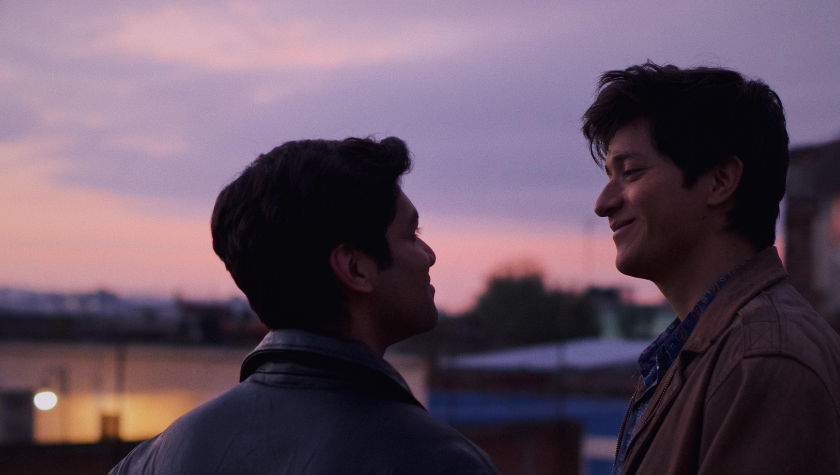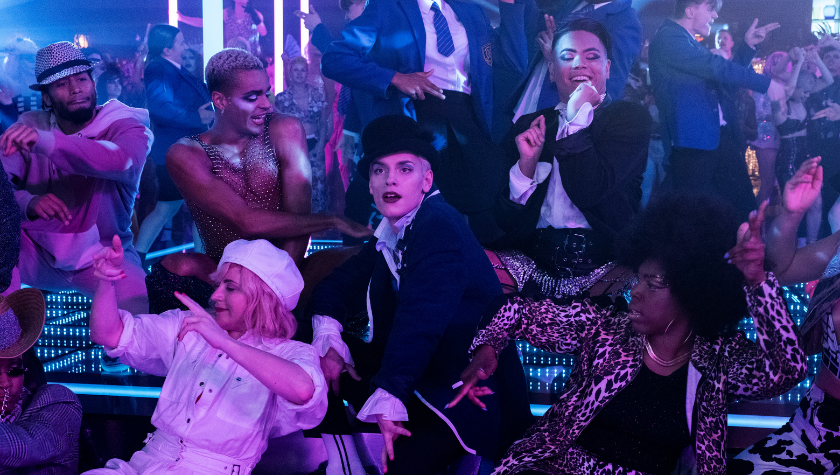Writer and director Asghar Farhadi preserves the feeling of real life in ‘A Hero’
January 7, 2022
Rahim (Amir Jadidi) holds a lost purse full of gold coins in his hands after his girlfriend Farkhondeh (Sahar Goldust) brings it to him as a saving grace — his ticket out of prison, where he ends up after his business partner runs off with their loan, leaving Rahim with heavy debts he could not pay back. He could use the money to get more than a two-day leave, but instead, he becomes interested in the true owner and his selfless deed puts his name in the headlines. However, the praise he receives for doing a heroic deed only brings more problems...
Writer and director Asghar Farhadi explores what it means to be a hero through Rahim in his new film, A Hero.
“The first concept of this story came to me after watching the play by Bertolt Brecht, the German writer, called [Life of] Galileo,” he says. “That was when this concept of the hero and the making of a hero was in my mind.”
The play has two lines about making a hero in society. When Farhadi went to Iran a few years ago to work on another film, he found the story of A Hero in newspaper articles.
“Although the storyline was very thin and it needed a lot of work, and it was a story that needed a lot of details, I started to write in [those] details and that took me two or three months,” he says, to fully flesh out the story.
While working on the script, Farhadi wanted to make sure that it felt authentic and submersive.
“The thing that was very important to me in this story was I wanted to make it as if it looks like life,” he says.
Farhadi also wanted to make sure he didn’t get caught in the monotonous rhythms of life. So rather than getting caught up in the day-to-day of each character, he makes it interesting by adding moments of tension he calls critical moments or "crisis moments."
“If you look at life, you will find that there's lots of repetitive stuff that feels dull; it feels like he has a dull rhythm,” he explains. “The way that you can make life interesting in the story is by taking those repetitive dull moments out by adding critical moments in the film.”
Rahim tries to prove himself as a hero to the public, but just when things start to look optimistic, new events surface. The same goes for other characters who are caught in moments of crisis. Farhadi uses these moments to explore each character’s life story and get the viewer’s attention.
“When people are in critical moments — conditions — you can find out about the other aspects of characters,” Farhadi says. “I was trying to find material from everyday life to create these critical moments.”
These critical moments don’t have to be elaborate, Farhadi says. For example, an elevator goes up and down and carries groups of people from floor to floor. But what happens if the elevator gets stuck between floors 14 and 15? He calls this a crisis moment where we spend more time with characters stuck in a situation, and we get to understand them on a higher level.
“I always try to make these conditions with small mistakes that people make in their everyday lives,” he says.
These moments of tension allow audiences to be a part of the story. They look at the film like a detective looking for the truth behind the newspaper stories and unexpected truths coming to light. The audience then acts as a jury, Farhadi says.
“If you give all the characters in the movie the time to explain themselves on why they're doing what they're doing, then this detective now has to try even harder to find out what the truth is.”
The film also touches on the theme of family. While Rahim is in jail, his son, Siavash (Saleh Karimaei), lives with his sister Malileh (Maryam Shahdaei) and her husband. Some scenes from inside Malileh’s house are full of action and movement.
“In the cities like Shiraz, the relationship between families are like this and when I was a child I saw those relationships and those dynamics too,” Farhadi recalls.
Capturing moments where family dynamics are present — full of conversations, cooking and running children — Farhadi had to ensure they upheld the feeling of real-life and camouflaged the camera in the room.
“Before I even let the camera come in, we did a rehearsal with the actors and we really tried to create real life in that scene,” he says. “When we had the movement of the actors choreographed, then we came in with the camera.”
The movement-filled moments especially uphold the realities of life and the relationships within it. We see Rahim smile through it all. Everything glimmers and he sees hope slowly come and go. Through it all, he puts his family first and we see those newspaper clippings come to life as if they are unfolding right in front of us.
“I try more and more to make my movies in a way that when the audience enters the theater, they don't feel like they're watching a movie or even a documentary, but life itself.”
Written by: Steven Vargas
Steven Vargas is a multimedia journalist based in Los Angeles whose work focuses on arts, entertainment and activism. He is a current grad student at USC Annenberg pursuing an MA in Specialized Journalism (The Arts) and previously graduated from USC with a BA in Theatre and Journalism with a minor in Dance. He is a current member of the Equity Board, a new initiative at Annenberg Media dedicated to diversifying sourcing and promoting inclusive coverage across the publication. His short doc, “Dancing at Home,” earned first place in the LA Press Club’s “Life in the Time of the Coronavirus Contest" in May 2020. More recently, he co-directed "Two Paths: One Direction," an award-winning short documentary produced with students from the USC and Prairie View A&M University about their experiences of 2020. He produced work for ET Live, TheWrap, Dance Magazine, BuzzFeed News, and more. His work can be found here: https://www.vargassteven.com/



